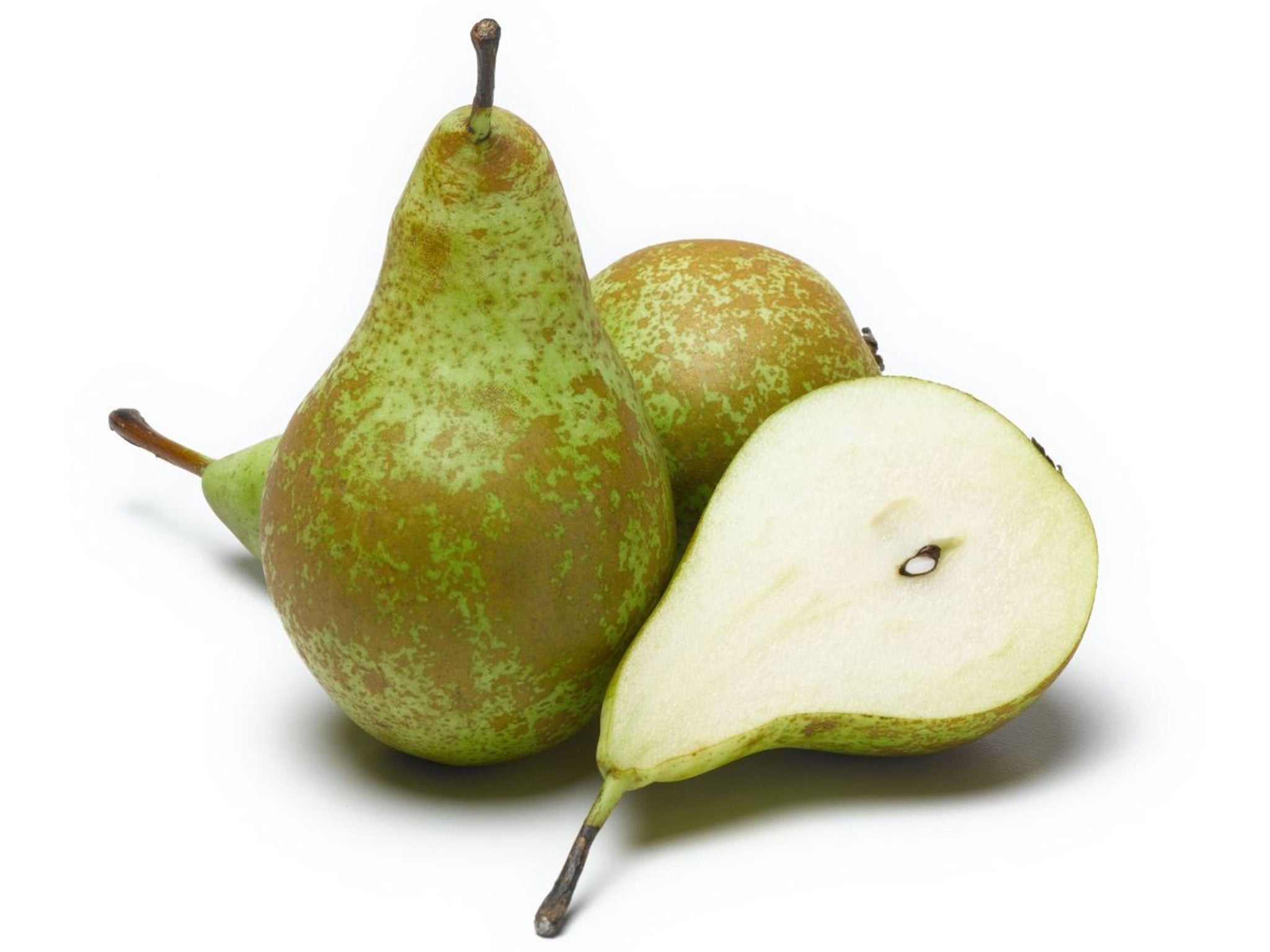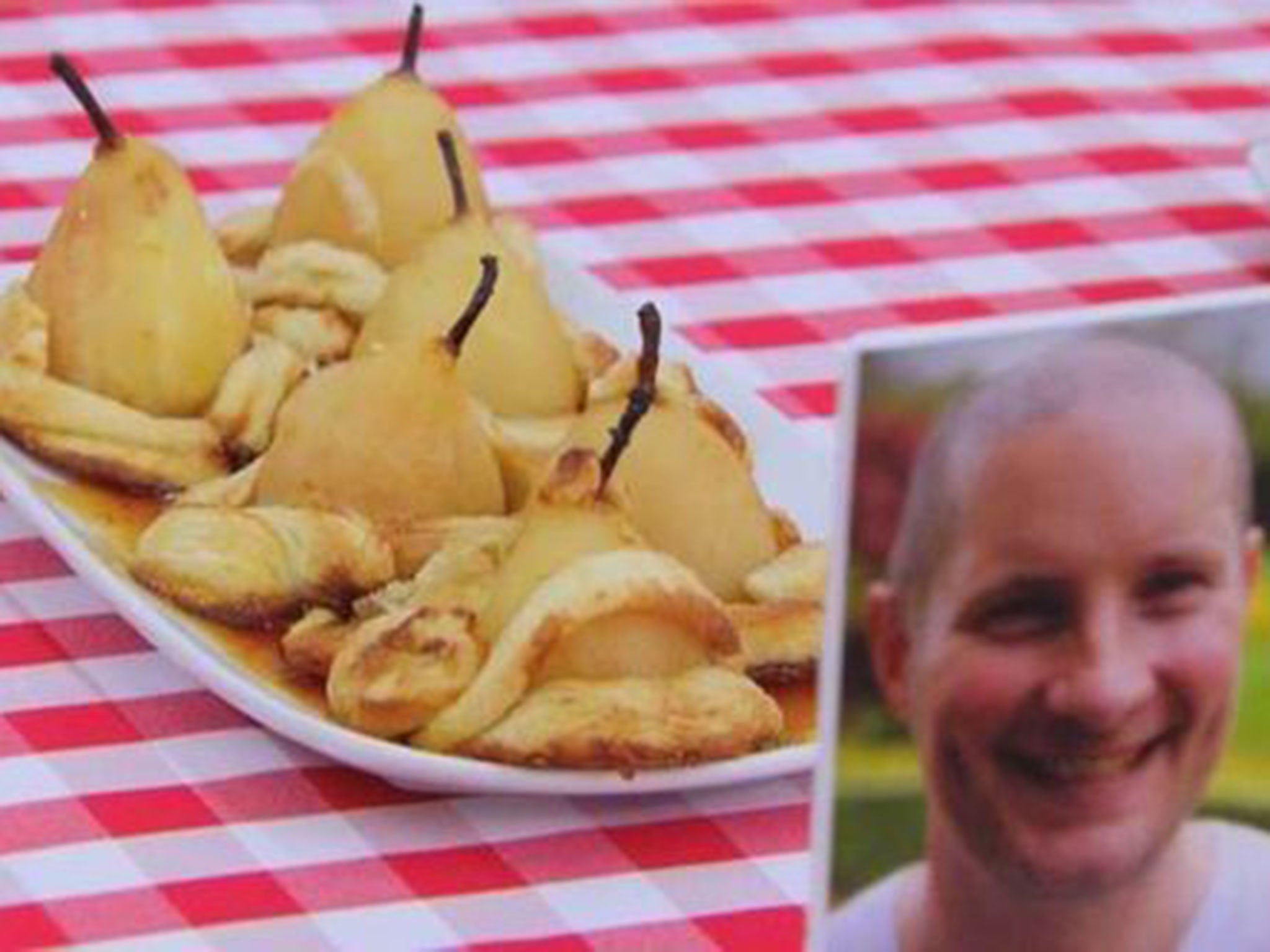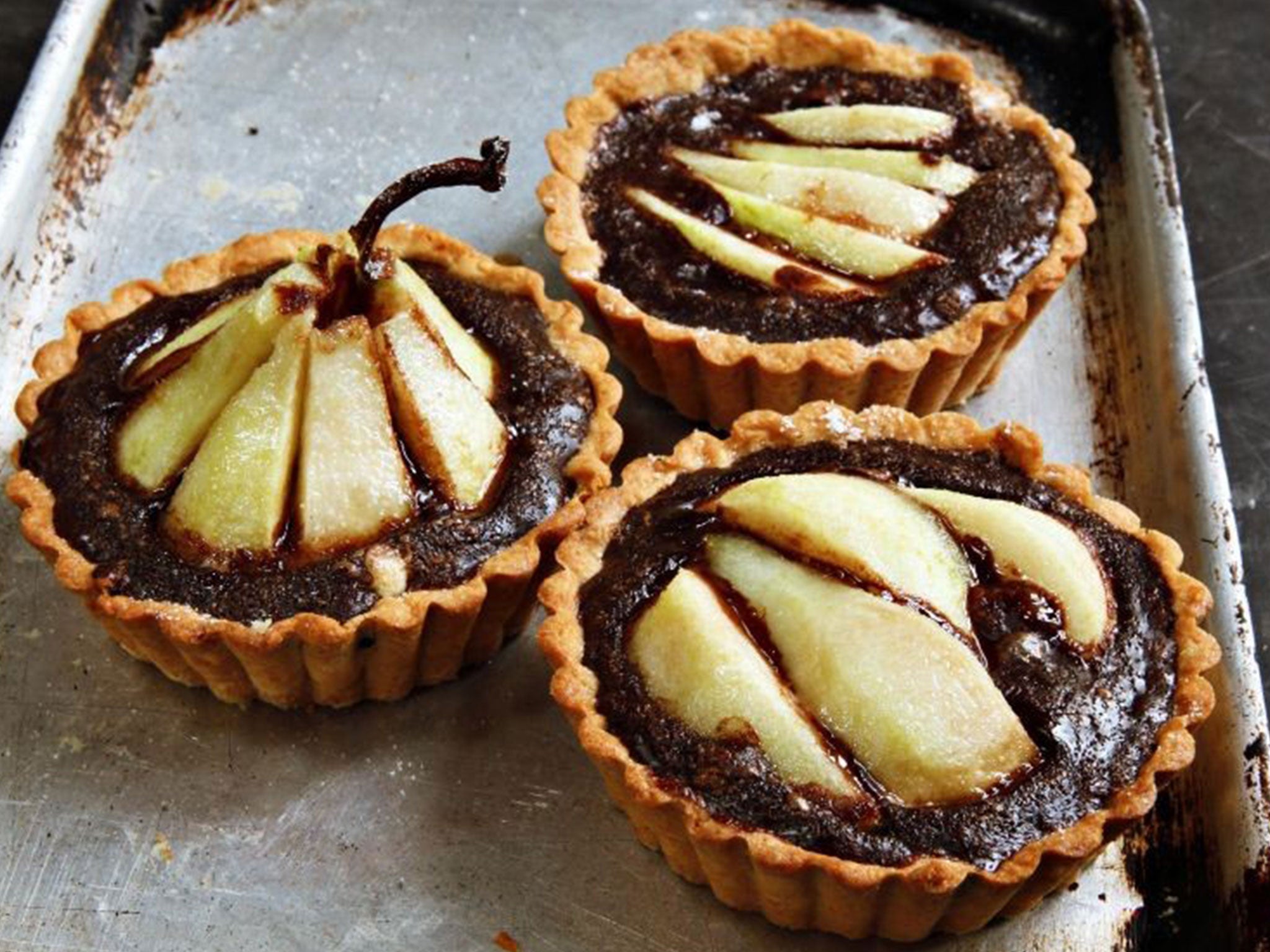The rise of the pear: How to make the most of the versatile fruit and delicious recipes
The Romans considered pears an aphrodisiac, but it was an appearance on ‘The Great British Bake Off’ that has sent sales soaring. Anthea Gerrie explores the many varieties and explains how to make the most of this versatile fruit

A funny thing happened when millions of people tuned in to see contestants wrapping pears in pastry a few weeks ago on The Great British Bake Off.
After watching the tricky task – a throwback to an ancient British baking tradition – viewers went out and bought pears like they were going out of style, with Waitrose alone reporting a 38 per cent increase in sales.
It might also have been the collective memory of how the perfect pear assaults the senses, that satisfying crunch giving way to an explosion of perfumed juice in the mouth. Like a mango, the pear is the most sensual of fruits, a perfect foil for salty cheese as well as a decadently sumptuous dessert ingredient. The Catalans, who lead the world in inventive cuisine, have one of the simplest but almost shocking matches for the fruit – a nice fat duck; try the combo and weep.
Yet the pear’s fortunes have been mixed in Britain since the Romans, who considered it an aphrodisiac, brought it with them 2,000 years ago. The Normans planted more varieties from France as they settled and Shakespeare mentioned the now defunct Warden pear in The Winter’s Tale.
Pears were mostly baked in pies until the introduction of the gorgeous Comice showcased the potential of the raw pear 150 years ago. But when the Conference arrived in 1894, named after the “Pear Congress” where it first became a hit, there was no contest – this distinctive tapered variety has dominated sales ever since.

However, this sometimes problematic fruit almost dropped out of the frame until television chefs slapped it back on the map (finalist Richard Burr thrilled viewers with his pain au chocolat stuffed with candied pear in the last episode of this year’s Great British Bake Off).
“Pears have been in decline for many years, but we are suddenly starting to see an increase in demand,” says Greg Sehringer, Waitrose’s pear buyer. He cites poor understanding of how to choose and store a fruit that can feel hard but be perfectly ripe inside, not ripe at all or simply mushy if left to ripen too long in the fruit bowl at home (they are most reliably stored cold, in the fridge).
While Waitrose feels that it has got around customer confusion by marking pear packs either “pre-ripened” or “ripen at home”, Marks & Spencer believes that its own increased sales are down to selling British pears only in season, so that they can sell the whole lot ready to eat between September and January. “Customers don’t want to leave them in their fruit bowl to ripen,” claims Shazad Rehman, fruit buyer at Marks & Spencer, who reports that a new baby pear is proving a big hit in lunchboxes, where they were once a staple but had gradually disappeared.
However retailers choose to tackle the ripening and labelling, pears are now hot. Quite genuinely hot, in tarts with natural dessert partners such as almonds, chocolate and/or ginger (combine any two of those three). But they are equally delicious cold, thanks to a practically perfect marriage with a surprisingly large range of other seasonal partners, particularly walnuts and Roquefort but also beetroot and baby Piccolo parsnips, too.
So why has it taken a television programme to remind us about a fruit that is so versatile, affordable and easier to find homegrown than ever before? Maybe we’re still not sure about the virtues of different varieties. Conference is “sweet and aromatic, with less of the graininess that some people dislike,” according to Rachel Lovell, of Riverford Organic Farms. She is currently packing Paul Ward’s organic Conference, grown in Kent, into farm’s current produce boxes.
Ward’s Comice are actually more delicious, but alas not grown in commercial quantities. Try Concord, a Comice-Conference cross, and also look out for the best of the imports – buttery, green Williams and Rocha, distinguished by their rosy blush.
The simplest way to enjoy a pear is sliced with a handful of walnuts on a plate, or go one step further and toss into a salad with nuggets of blue cheese and chicory. Poaching in red wine requires care – try Marks & Spencer’s pears in a spiced Merlot dressing, peeled and ready to be microwaved in their pouches. Keen bakers will happily labour over tart recipes that incorporate frangipane fillings and/or ginger (Nancy Silverton’s pear and ginger tart from her book Desserts is the ultimate pear pudding, but requires time, skill and industrial quantities of ginger). Chocolate is another good partner so long as it’s not allowed to overwhelm the subtle fragrance of the pear.
Pears are good for drinking, as well as eating; perry, which has been around for centuries, is once again claiming a niche as a cider alternative, and perry vinegar is a mild and delicious addition to a blue-cheese dressing for salad (just add a small amount to a creamy blue cheese mashed with sour cream or crème fraîche). Poire William, a fine distillation from Burgundy, makes an elegant digestif and in the heart of perry country, Charles Martell is making his own vintage pear spirit from rare varieties.
The good news about the pear revival is that retailers are offering ever more choice, with new varieties coming on stream. At Marks & Spencer, look out for the Liquorice pear, a Williams cross with an aniseed flavour, and the Papple, which has an apple-like crunch.
Waitrose, which sells 10 varieties of homegrown pear in season, is fielding Louis Bonne, Beurre Hardy, Winter Neils and Onward, as well as all the usual suspects, plus Abate Fetel from Italy, South African Cheeky and Velvetine from New Zealand. The latter has been planted in local orchards as a hopeful successor to the omnipresent Conference, which celebrates its 120th anniversary this year.

FRANGIPANE & CHOCOLATE TORTE RECIPE
To ensure that the pears have visibility in this luscious tart, from the Gladwin brothers at The Shed in London’s Notting Hill Gate, pour the chocolate filling in carefully – you may need less than the given quantities.
Pastry:
- 225g plain flour
- 110g chilled unsalted butter, cut in small pieces
- 80g caster sugar
- 1 large egg
Rub the flour, butter and sugar to a breadcrumb consistency, make a well for the egg and gradually blend into the mixture with a palette knife, drawing into a ball with your hands. Knead gently on a floured board, then chill for at least 30 minutes in clingfilm.
Preheat oven to gas mark 6 (220C) and line a 25cm loose-bottom tart tin with greaseproof paper, greasing the edges to avoid the pastry sticking. Roll out the pastry, cover with baking beans and bake blind for 10 minutes. Remove baking beans and bake for a further 10 minutes.
Frangipane:
- 60g unsalted butter at room temperature
- 120g icing sugar
- 1 large egg
- 120g ground almonds
- zest of 1 orange
Beat the butter and sugar until light and fluffy, beat in the egg, then fold in the ground almonds and orange zest. Spoon in an even layer over the cooled pastry case.
Chocolate and pear filling:
- 225ml double cream
- 125ml whole milk
- 300g dark chocolate
- 3 large eggs
- 3 ripe pears, peeled, cored and quartered lengthwise
Heat the cream and milk almost to a boil, add the chocolate and stir over a very low heat until melted. Remove from the pan and beat in the eggs. Arrange pear quarters in a Catherine-wheel shape on top of frangipane and pour in the chocolate sauce.
From ‘The Shed: The Cookbook’, by Gregory, Oliver and Richard Gladwin (Kyle Books, £19.99)
PEAR JAM (makes one jar)
- 2 Conference pears, peeled, cored and coarsely grated
- 100g caster sugar
- 1/2 teaspoon ground cinnamon
- Juice of half a lemon
- 2 tablespoon water
Put the grated pear, sugar, cinnamon, lemon juice and water in a small saucepan and stir over a low heat until the sugar dissolves. Bring to the boil and simmer until all the liquid has evaporated, around 6 minutes, stirring occasionally. Remove from the heat and set aside to cool. Serve on a chicory leaf with some blue cheese.
Join our commenting forum
Join thought-provoking conversations, follow other Independent readers and see their replies
Comments